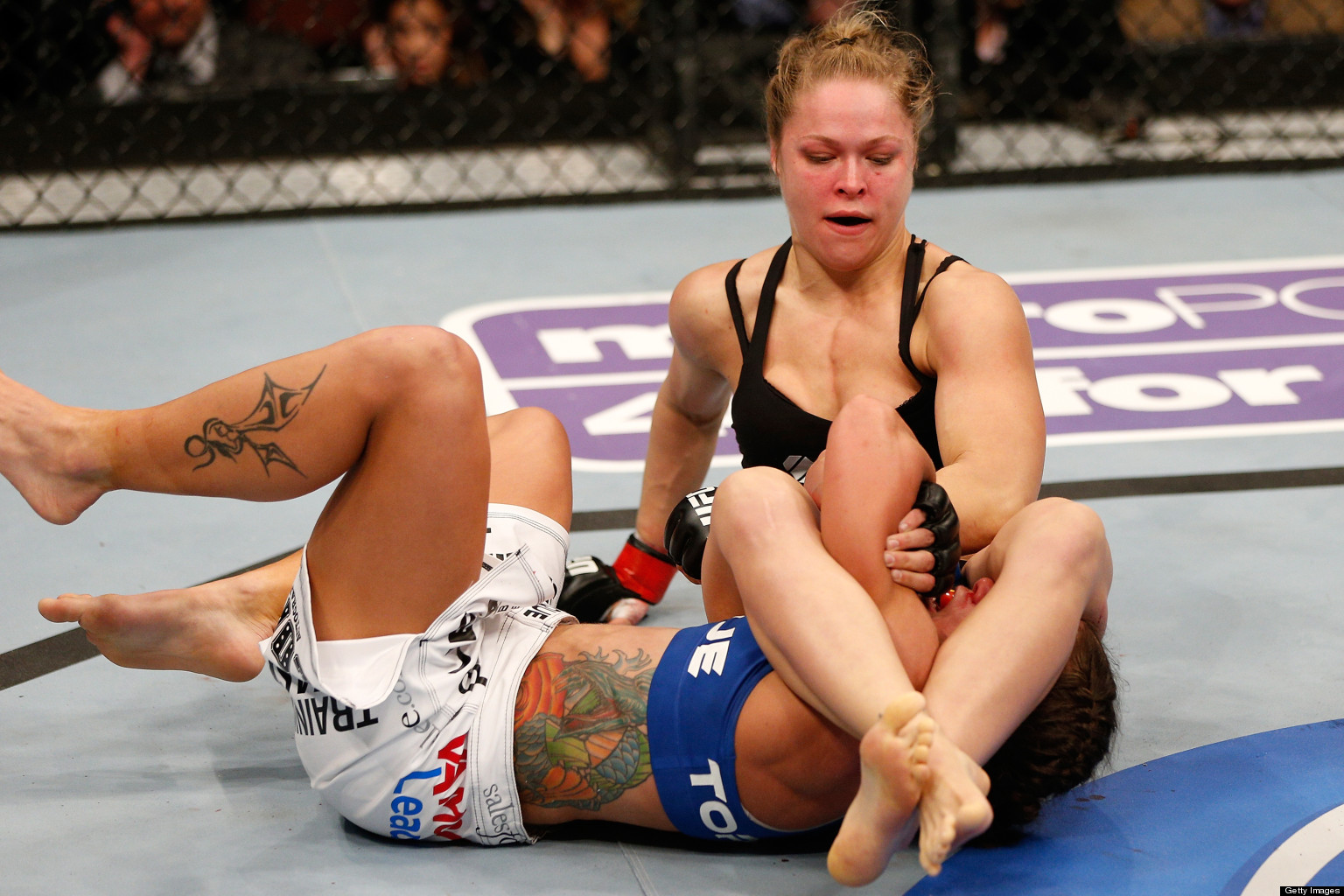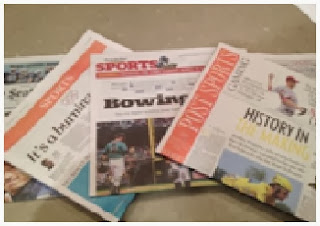
UFC is a successful mixed martial arts company which has
exploded in popularity across the globe. The sport is a brutal mix of a variety
of fighting styles, including ju jitsu, boxing, wrestling, judo and often ends
with blood, broken bones, a knock out and a hospital visit. This sport is not
one that you would associate with women at all, in fact, president of UFC Dana
White was once famous for his declaration that ‘women would never fight in the
UFC. Now, Dana White cannot stop talking about the success of women in the
sport, and ratings for women’s fights are growing. Where sportswomen all over
the world are fighting for equal exposure and pay, the UFC has become an
unlikely example of what could be. This article will explore some aspects of women’s
involvement in UFC, and demonstrate the barriers it is helping breakdown.
The UFC has a number of weight based divisions, where
fighters take on opponents of similar weight and all weight divisions fight
under the same rules and requirements. In the UFC, this is five 5 minute
rounds, unless the fight finishes earlier, through submission or knockout. The
introduction of women into the sport came through a new weight division of women’s
bantamweight, where women fight under the same rules as men, against opponents
of the same gender and similar weight. The structure of women in UFC sends a
message that women are as tough and as capable as men, and this is further supported by the planned introduction of a number of women's weight divisions, played on the same card as men's fights.
This structure is a positive approach to mixed gender sport; traditional method of sporting separation sends a subtle
message that women’s sport is second to men, and that men’s sport represent
real power and athleticism, or quite simply, that men’s sport is the real
thing. ( (McDonagh & Pappano, 2008) This idea is further
substantiated by the differences in play rules, for example, tennis, where
women play best of 3 sets, while men play best of 5. This rule stemmed from an old concern that women would over exerting themselves, however has never been changed to
reflect that women are capable of playing the same duration as men. UFC
expects women to fight under the same conditions and rules as men, and as such,
subtly contributes to a change of view regarding the athleticism, strength and
power of women, when compared to men.
Women’s sport has often been more about sex appeal than the
sport itself. There is a rampant sexualisation and focus on appearance of women
in sport, which shifts the focus from their physical power and ability and
minimises the symbolic threat sportswomen pose to male power and dominance (Wenner, 1998) . (Kian, Bernstein, & McGuire, 2013)
The UFC is surprisingly ahead of the game when it comes to promoting the strength and power of women, rather than their sex appeal. Women fight in an
unrevealing sports bra or t shirt and trunks, in the style they choose. The lack of
sex appeal in the uniform allows the attention on their bodies, but in the
power, muscles and strength of their bodies, as for the men’s fights, not for
the sex appeal on show.
The income generated through sport is intertwined with the
media coverage of the sport, and athlete. The more media interest from the
public, the more they are willing to pay, and in turn, the more exposure, the
higher the sponsorship interest for the sport and athlete. Many argue that the
focus on women’s bodies and sex appeal is necessary for media and sponsorship,
therefore making it okay, as it means that female athletes have more
opportunity to make money. The coverage of women’s sport is unacceptable and
goes further to reinforce the gender ideology that women are sexy, beautiful,
graceful, but not meant to be powerful or athletic.
The debut women’s fight in the UFC, between Ronda Rousey and
Liz Carmouche, was not focused on sex appeal. It was as brutal as a men’s
fight, with Ronda Rousey beating Liz Carmouche in the first round with an arm bar
submission. Despite the lack of sex appeal, the fight reportedly sold over
400,000 pay per views, which is around the same for the recent UFC 153 fight
featuring long time champion Anderson Silva. (Holland, 2013) This result proves that woman can
attract television coverage through their skill and athleticism, just the same as men can.
The success of UFC 157, and the response from the public has
boosted the profile of women in the sport, and opened the doors for other
women. Ronda Rousey is a key female fighter helping to breakdown these
barriers, and surprisingly, being fairly remunerated for it. Where many women
struggle to be adequately paid in the sporting world, Ronda Rousey has
reportedly signed a massive contract with the UFC. She was paid $90,000 (half
of which was a negotiated winning bonus) for her debut fight in the UFC, and
was also reportedly given a portion of pay per view sales, a contract bonus
only offered to a select few fighters. This substantial contract opens the door
for future women fighters to negotiate a contract that is fair in comparison to
their male counterparts.
In further progress, the UFC has committed to expanding
women in UFC through the reality TV show, The Ultimate Fighter. For the first time, mixed gender teams of UFC fighters will
fight for a contract under the guidance of two female coaches, Ronda Rousey and
Miesha Tate. The fact that a male dominated sport has two female stars coaching
men and women in a popular reality TV show, shows the success of women in the
UFC, and the respect given to female competitors by other fighters, both male
and female, by the supporters and by the organisation.
The journey the UFC has taken towards gender equality is far from over, but the organisation has taken big steps forward in the way that they have promoted women, and highlighted the power and success of these fighters. They have demonstrated that women can be admired for more than their looks, and produced some strong role models for other young girls who wish to succeed in any male dominated sport. If a fighting company can do it, I believe that any sport can!
The journey the UFC has taken towards gender equality is far from over, but the organisation has taken big steps forward in the way that they have promoted women, and highlighted the power and success of these fighters. They have demonstrated that women can be admired for more than their looks, and produced some strong role models for other young girls who wish to succeed in any male dominated sport. If a fighting company can do it, I believe that any sport can!
References
Coakley, J.,
Hallinan, C., Jackson, S., & Mewett, P. (2009). Sports in Society:
Issues and Controversies in Australia and New Zealand. Australia: McGraw
Hill.
Holland, J.
(2013, February 26). UFC 157 pay-per-view (PPV) buys top 400k for Ronda
Rousey according to early estimates. Retrieved from MMA Mania:
http://www.mmamania.com/2013/2/26/4005420/ufc-157-pay-per-view-ppv-buys-400k-ronda-rousey-mma
Kian, E.,
Bernstein, A., & McGuire, J. (2013). A major boost for gender equality or
more of the same? The television coverage of female athletes at the 2012
London Olympic Games. Journal of Popular Television, 143-149.
McDonagh, E.,
& Pappano, L. (2008). Playing with the Boys: Why Seperate is Not Equal
in Sports. New York: Oxford University Press.
Wenner, L. (.
(1998). Media Sport. New York: Routledge.



















